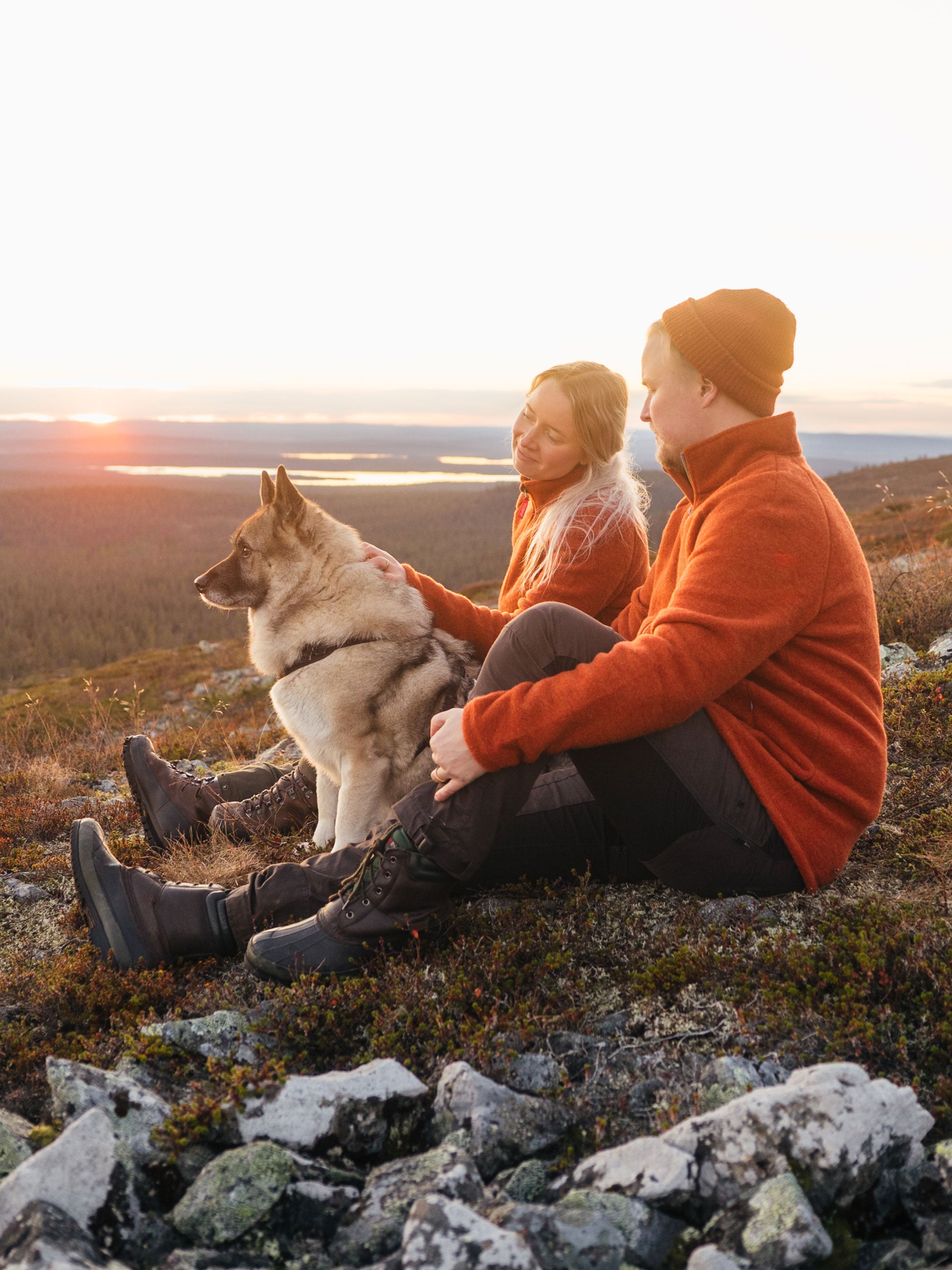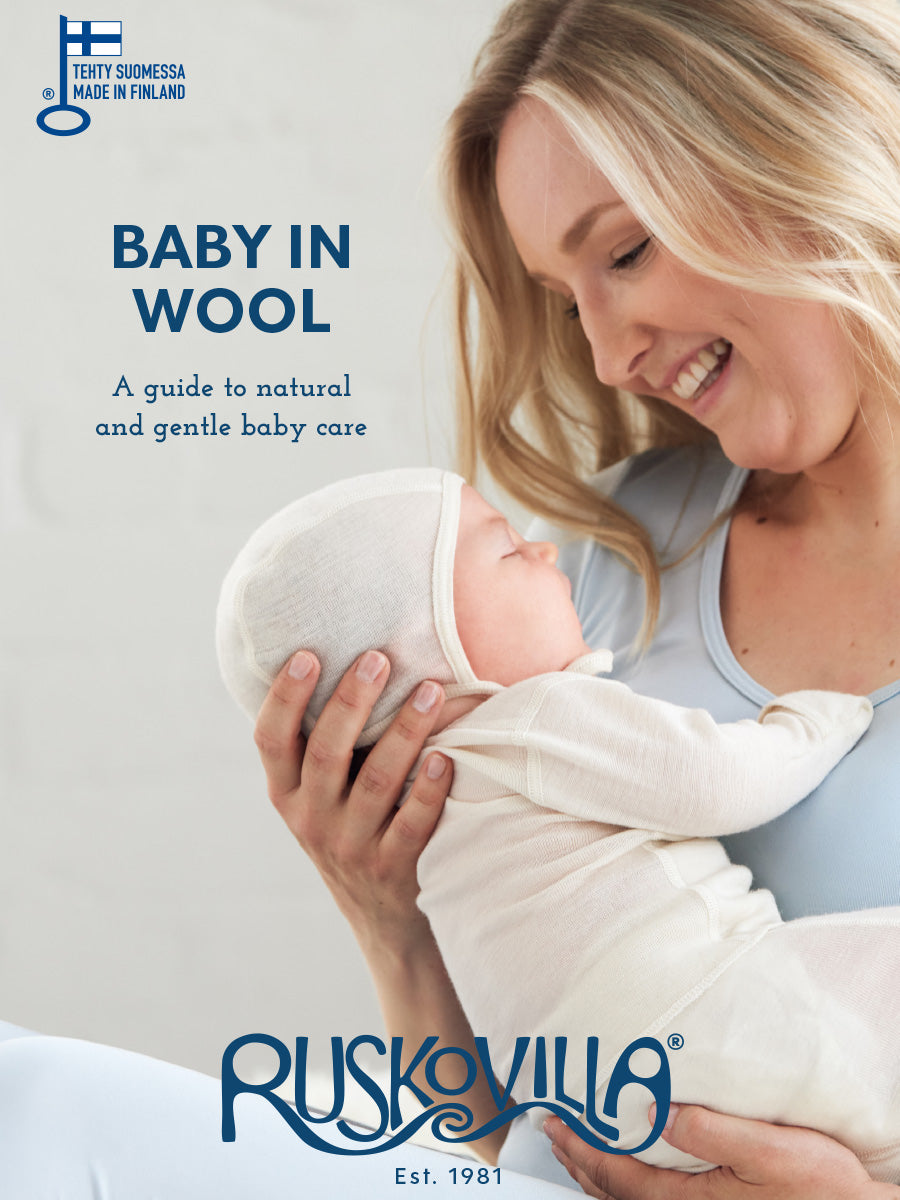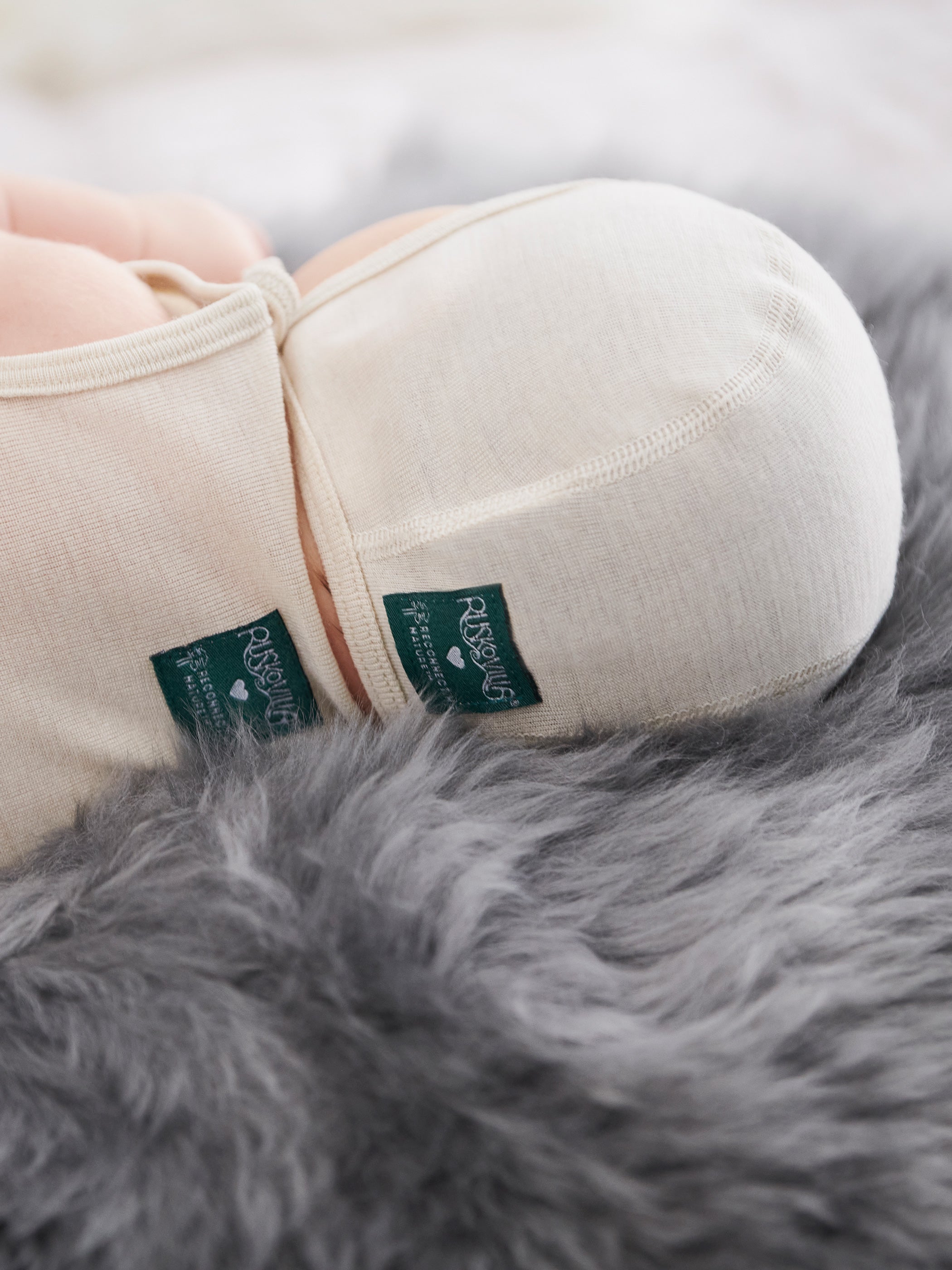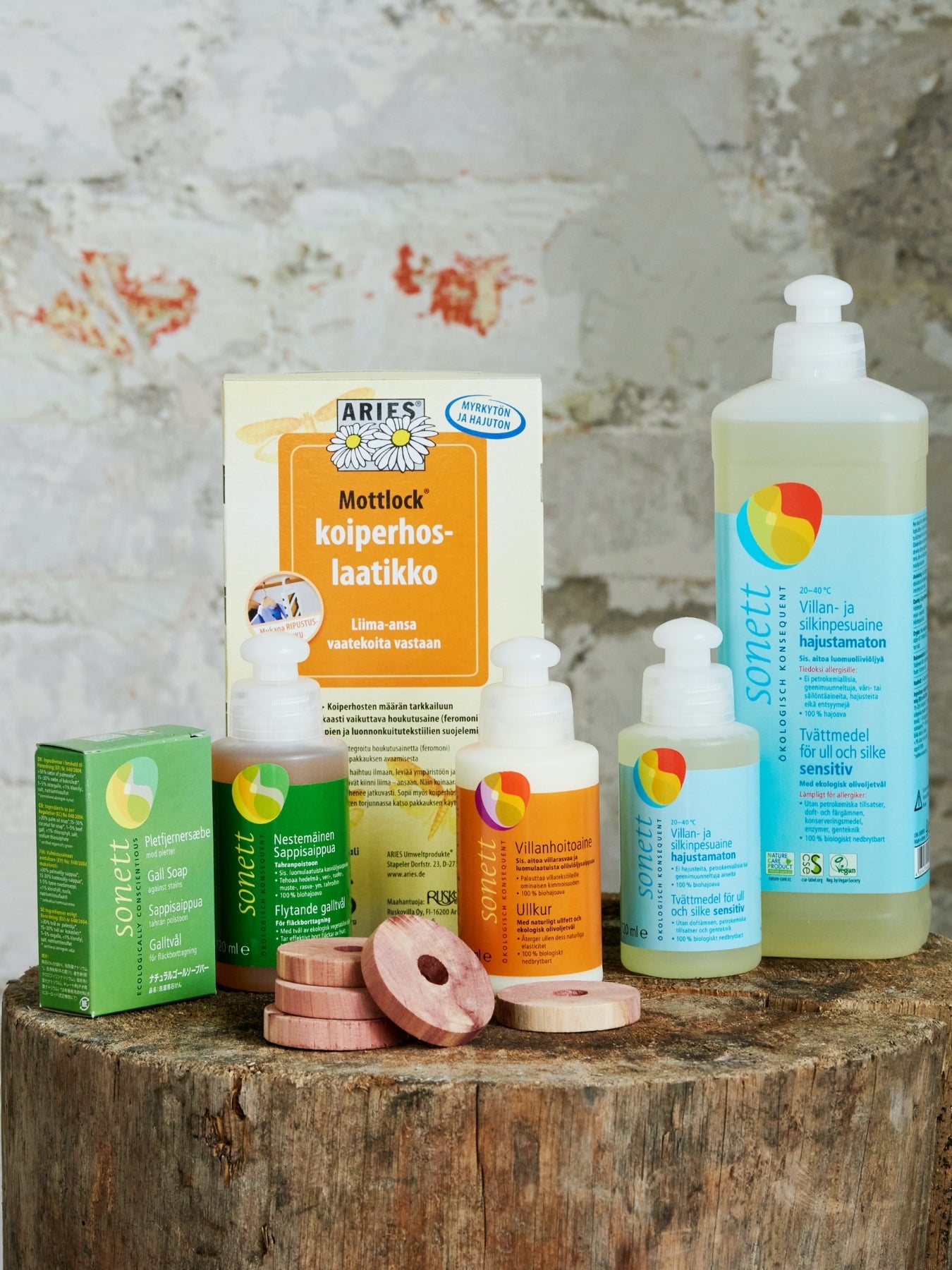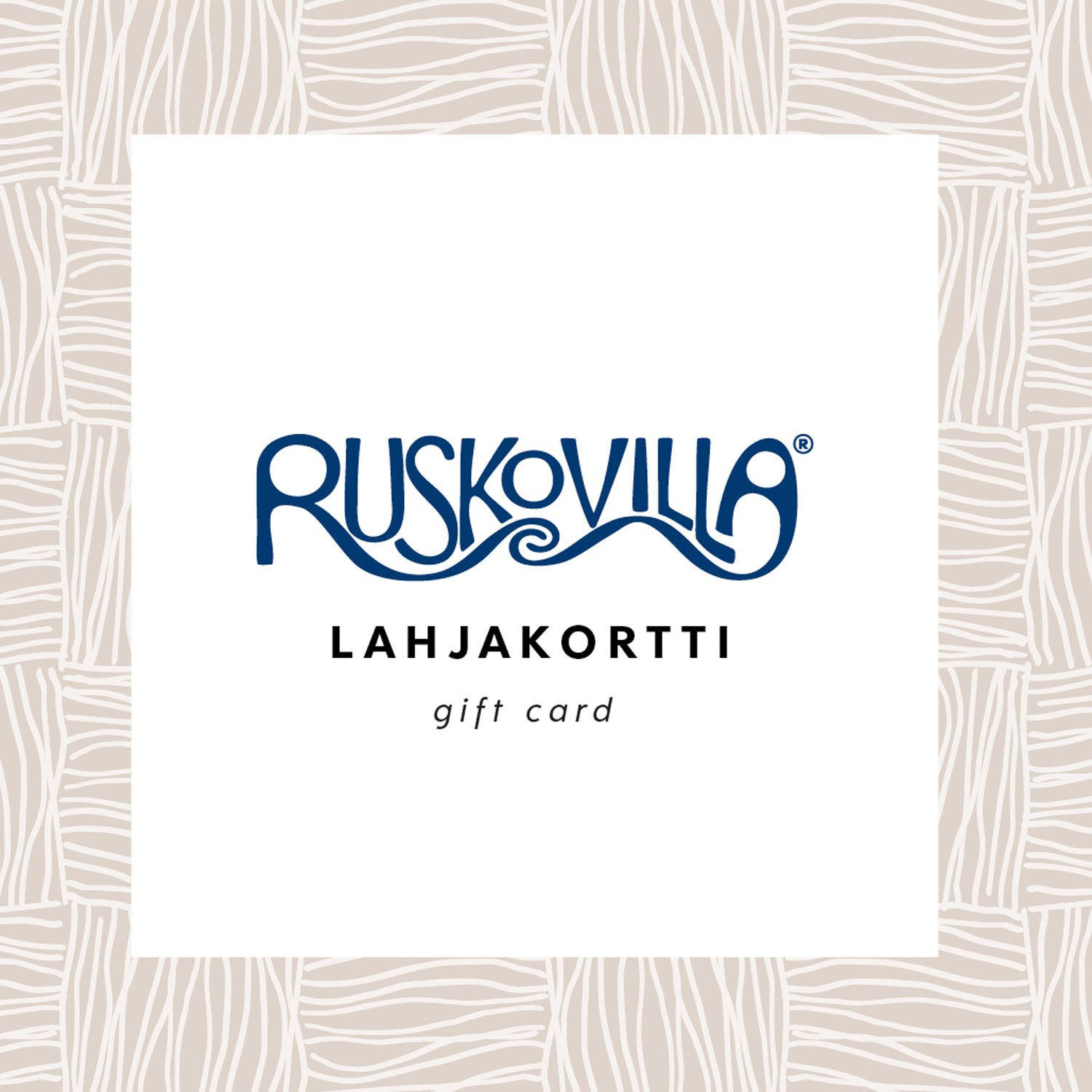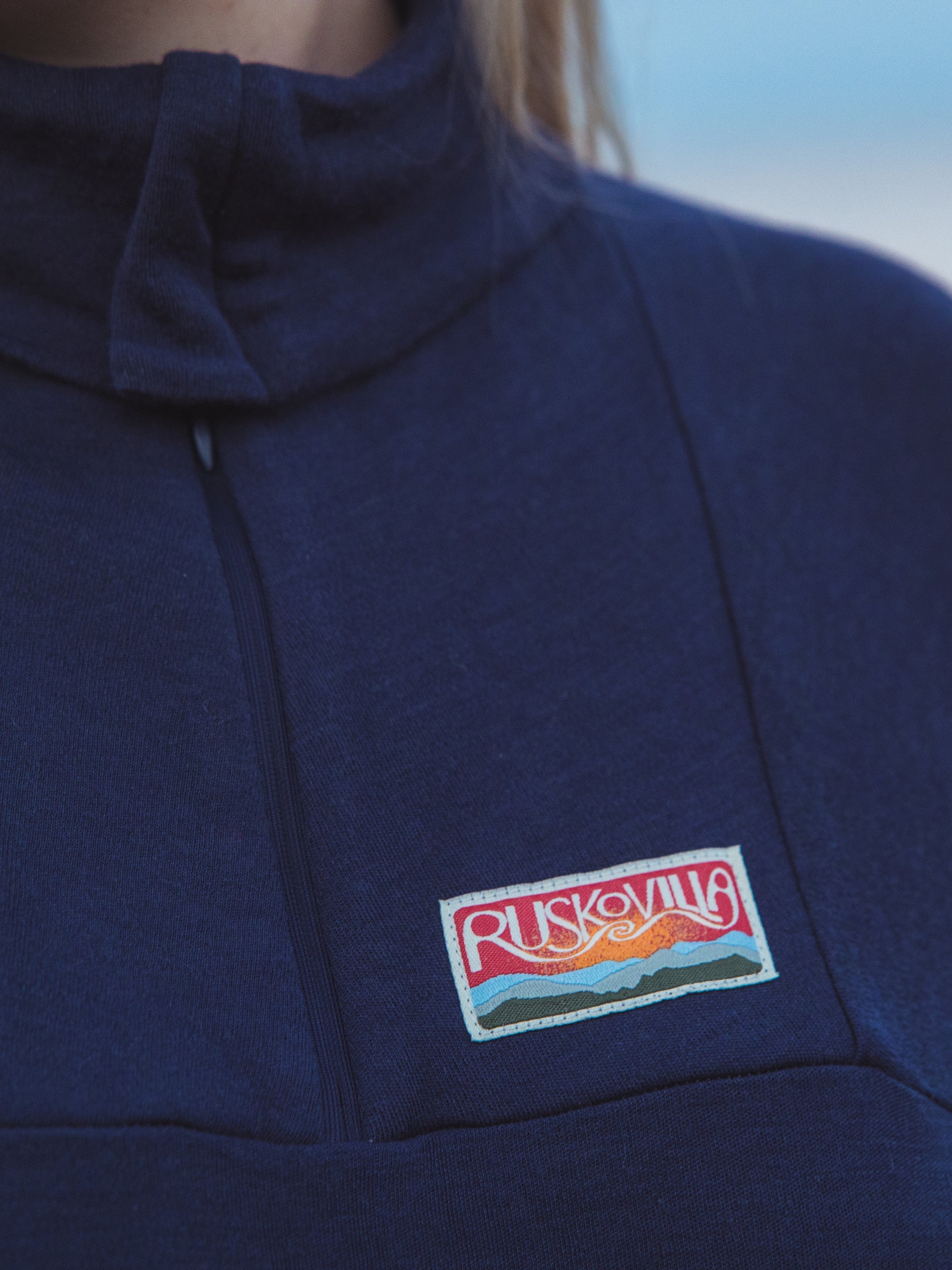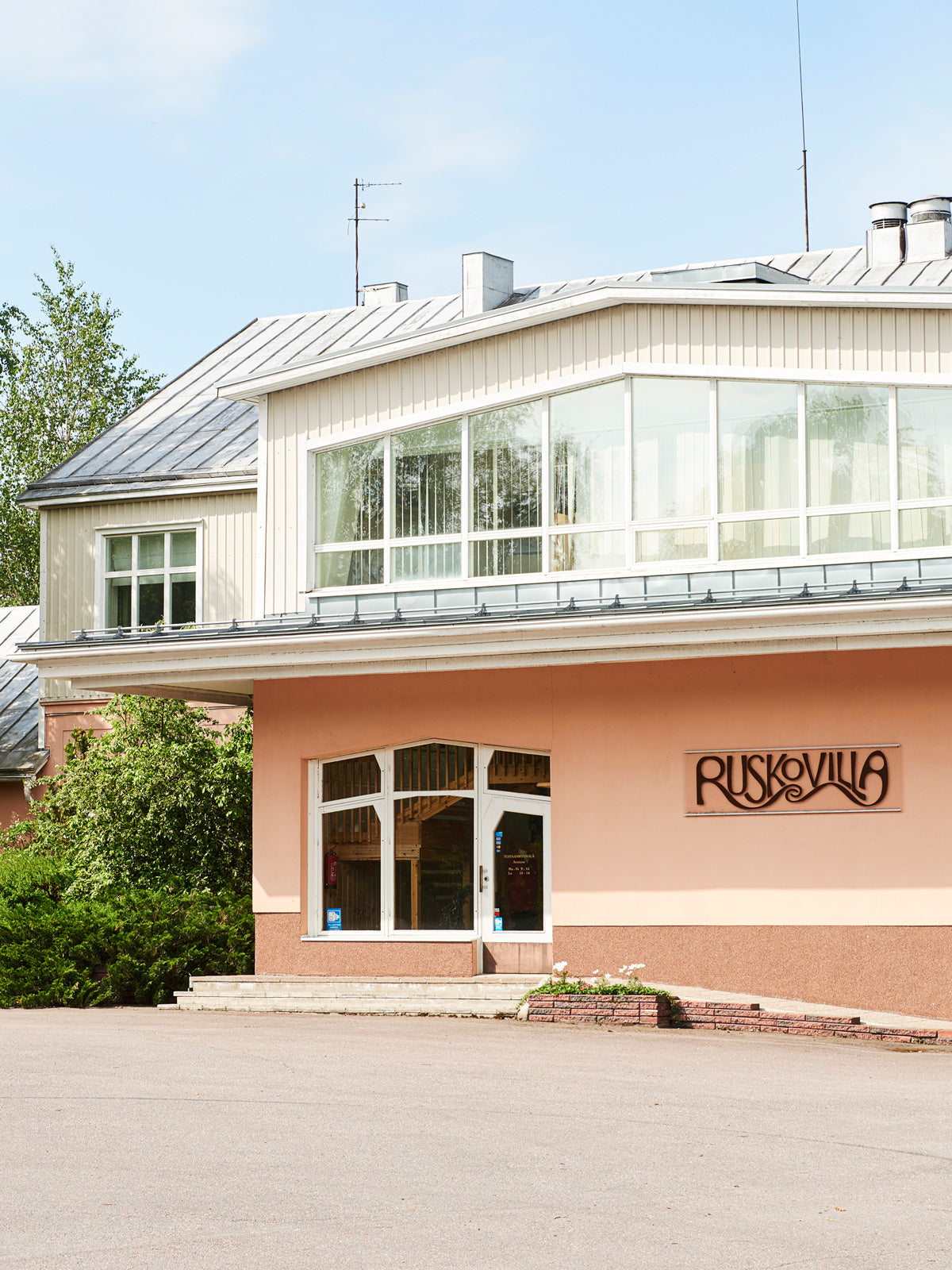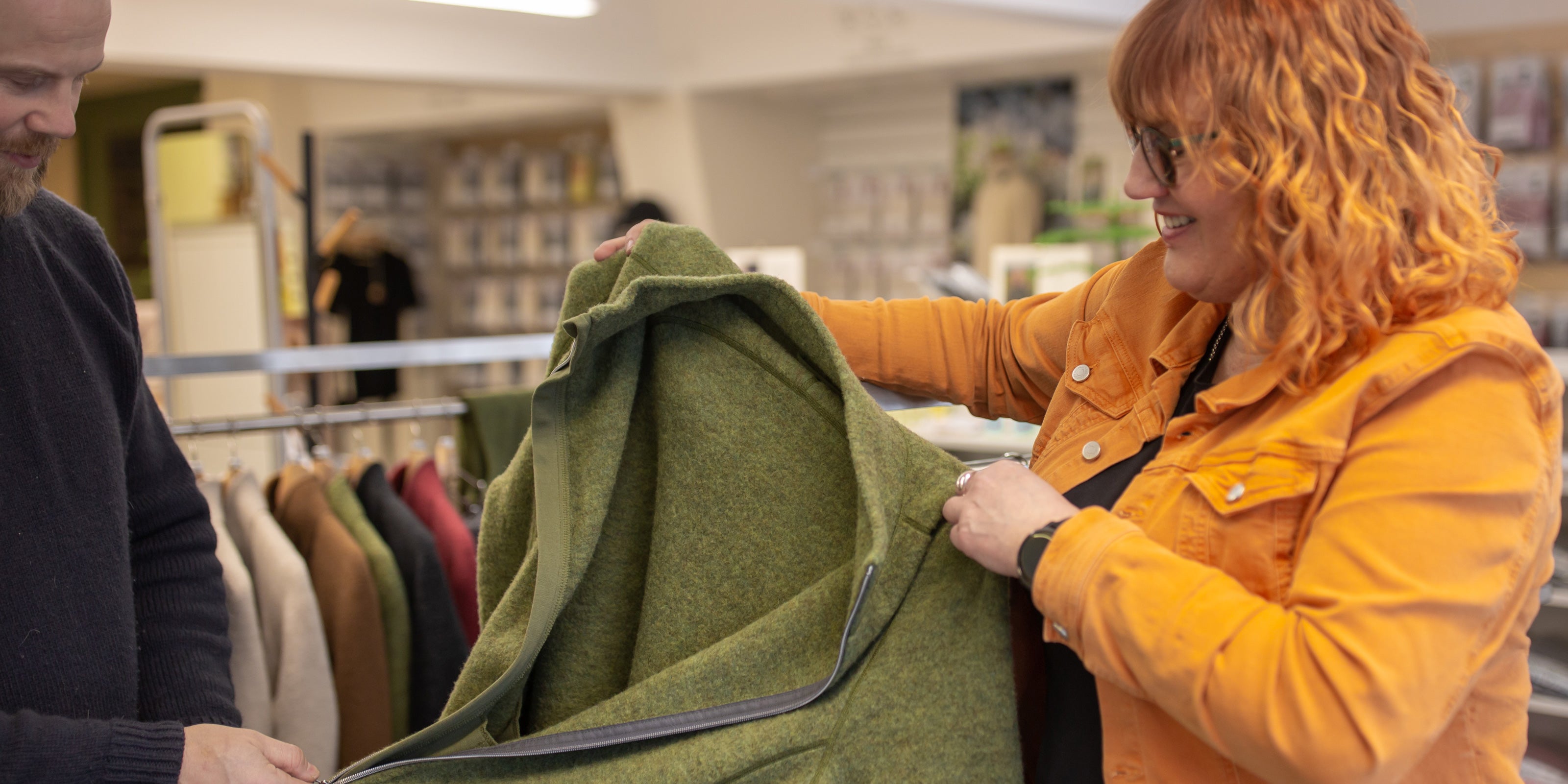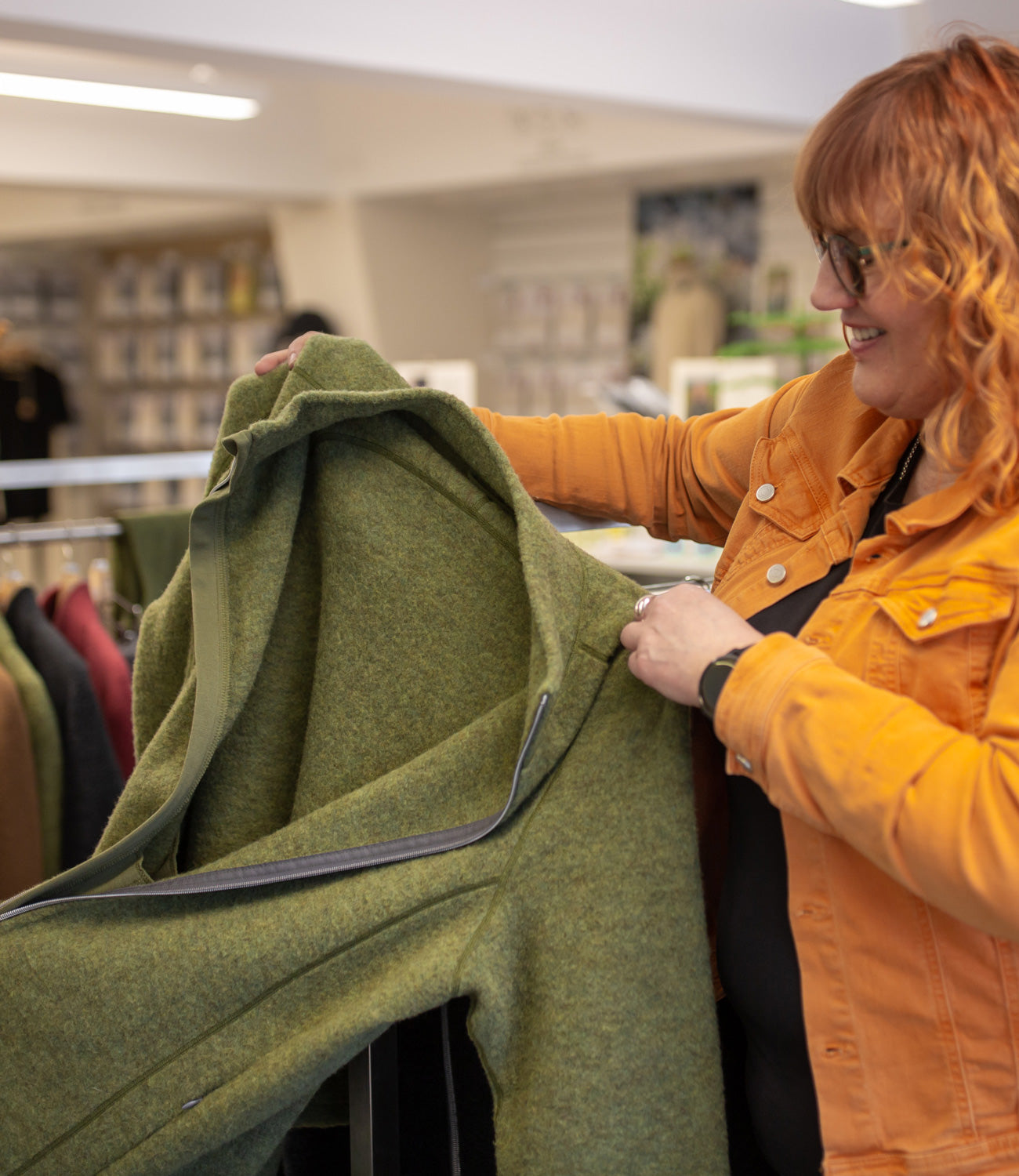More information about us and our products
Below we have compiled our most asked questions about our materials, products and operations.
What is Ruskovilla?
Ruskovilla is a Finnish family business. Our headquarters, production and warehouse are located in Artjärvi, Päijät-Häme, about 1.5 hours drive from the Finnich capital, Helsinki. In our story we tell you more about our company's roots and values.
What raw materials do you use, and where do they come from?
From the very beginning, our principle has been to make high quality products from natural fibers. Wool, silk, silk-wool and cotton each have their own unique product characteristics, and therefore their best suited for different uses.
All of our main materials are certified organic. Organic production takes into account the well-being of both nature and people. Our mulesing-free merino wool comes from responsible suppliers in Argentina and Uruguay. Our silk comes from one of the world's few organic silk farms in Sichuan province, central China. The silk wool is a mix of organic merino wool and natural silk.
Learn more about each material's journey to the finished product materials section and in the product description for each product.
Who manufactures your products and where?
We provide more information about the origin and manufacturing of each product in the product description.
Most of the products we sell are made by by our own trained and monthly paid professionals at the Old Dairy in Artjärvi, Finland. These and other products made in Finland by our subcontractors are identified by the Finnish Key Flag symbol.
Some of our products, such as silk bonnets, sheepskin rugs, laundry liquids and yoga mats, come from our reliable and long-term suppliers in Europe, China and New Zealand. Even in these products, we favour products that meet organic standards wherever possible. These products are also stored in our own warehouse in Artjärvi, so we are usually able to ship them no later than the next working day after the order is placed.
How do I wash and maintain my products correctly?
Good care is an important part of the ecology of clothing, as proper washing and regular maintenance will significantly extend the life of garments. We have compiled washing and maintenance instructions for each material and product, and this information can be found on the product pages, on our guides section and on the product packaging. You will also find more concise wash and care instructions on the product size label.
For machine washable wool and silk products, we recommend using Sonett's gentle wool and silk detergent, and for stain Sonett's gall soap. Since we do not use mothproofing treatments that are harmful to humans and the environment, we recommend storing items in their original or other tightly sealed plastic bags for summer and long-term storage.
Why should I choose natural fibers over synthetic fibers?
Skin is our largest organ and via its two-way pores for example all the chemical particles found in our clothing can enter our bodies. That's why it really matters what we put on our skin.
We have written a lot of useful things about the natural fibers we use for background information. In a nutshell we believe that over millennia nature has done an amazing job with product development and us human’s haven’t come even close with synthetic fibers. Silk and wool are great insulators: they feel cool when hot and keep you warm when it’s cold. Both can absorb considerable amounts of moisture in them without feeling wet. In the dry winter air wool and silk don’t become static as easily as man-made fibers.
Natural fibers are also relatively easy to care for, as wool, for example, is naturally dirt-repellent and odour-neutralising, so simply airing it out is often enough to freshen it up. Silk’s fine protein structure resembles human skin and is therefore well-suited also for people with allergies and sensitive skin. Whereas synthetic fibers usually catch fire in an instant, wool is a fire-safe material and therefore very convenient around campfires.
During washing and at the end of their lifecycle even product made out of recycled plastic give out microplastics into our water systems. Natural fibers on the other hand 100% decompose and become part of natural cycle.
Do you have a mending service?
Repairing the old is always more environmentally friendly than making the new.
By contacting us Customer Service we can advise you on repairs and explore alternatives. Our factory outlet staff can also help with these issues.
How to recycle Ruskovilla products at the end of their life cycle?
Ruskovilla garments are made from 100% natural fibres. They are long-lasting, biodegradable, and can be reused or recycled in various ways once they are no longer wearable.
Items in good condition can be sold second-hand or donated through local recycling centres or charity organisations.
Worn-out garments can often be repurposed – for example, used as patching material, in crafts, or creatively upcycled.
Textiles that have reached the end of their life should be disposed of according to local waste and recycling regulations. Many countries offer separate collection for used textiles or have designated disposal points.
In Finland, we also accept used Ruskovilla products at our factory store in Artjärvi. These items are delivered to our partner Dafecor, where they are recycled into industrial materials. Please note: only clean products are accepted. Small holes or minor stains are not an issue.
How have you taken the environment into account in your production?
Nature has given us all the great raw materials, so we want to treat it well in return.
All the raw materials we use are certified organic, produced with respect for nature in many ways. For example, the certification criteria prohibit the use of chemical fertilisers and monoculture, and different crops are grown in rotation to maintain soil nutrients. Dyeing is carried out in closed systems using reactive dyes, where the fiber reacts completely with the dye, leaving no residue. In contrast to the rest of the textile industry, chromium dyes and heavy metal salts are not used in organic production. You can read more about organic production here.
Our own products are sewn in Finland, which keeps the freight distances for the finished products short. The work is carefully carried out by our own seamsters and seamstresses using the best possible raw materials, making the garments long-lasting. They are not finished with any moth-proofing agents that are harmful to nature and humans, making them safe to produce and use.
The garments are stored in their original product bags to protect them from pests. Amerplast manufactures our product packaging from environmentally friendly Green PE material. Green PE is manufactured using ethanol, a by-product of sugar production. Product packaging can be returned to the plastic packaging collection point for recycling.
We have designed out our entire production so that we use materials wisely and we have practiced circular economy long before the entire term even existed. For example, our white wool swatches are carded into filling for duvets and pillows and colorful swatches are turned into parquet underlays and other industrial mats. All our products are made with using carbon dioxide -free energy, and we use renewable geothermal energy to heat our production, warehouse and shop premises. LED lights and heat recovery for ventilation increase energy efficiency.
A big part of ecology is proper maintenance and washing of products. We only sell biodegradable and ecological Sonett washing detergents. We encourage you to mend your garments instead of throwing them away, and offer a range of products to make repair and mending easier.
During washing and at the end of their life cycle, microplastics from recycled plastic products end up back in water bodies, while pure natural fibers decompose 100% into the natural cycle.
How do you take into account animal rights in the manufacture of your products?
The natural fifibersbers we use, wool and silk, are animal-derived, and thus, the welfare of the animals producing them is a key consideration in our production process.
All our raw materials are certified organic. Certification fundamentally ensures that animals are well taken care of in terms of nutrition, shelter, and healthcare, and that they have the opportunity to live in a manner consistent with their species-specific behaviors.
The organic merino wool used in our garments comes from Argentina and Uruguay, where the painful mulesing procedure is not needed, and the sheep graze freely. Both in Argentina and Uruguay, sheep production is overseen by local authorities, with the Argentine authority known as PROLANA, which also trains and certifies shearing professionals. These professionals are regularly audited, and any misconduct towards animals results in the shearer being temporarily suspended and given additional training.
Sheep are gathered once a year for shearing. During shearing, efforts are made to create a quiet and stress-free environment, as calm animals are always easier to handle. The method used on the farms avoids tying up the sheep, making the shearing process as quick and minimally restrictive as possible. Occasionally, minor cuts occur during shearing (one example from Argentina reported one cut per 3,500 sheep sheared), and there are detailed instructions for wound care, including disinfection and possible stitching. Stitches are always applied by a veterinarian or a shearer with specialized training.
The principles of mulesing-free and free grazing also apply to the sheepskins we source from New Zealand. These skins are a byproduct of meat production from farms certified under the Farm Assurance Programs. This program sets requirements for animal welfare, including nutrition, healthcare, and species-specific living conditions.
For silkworms, the requirement for a species-appropriate life is more challenging because they have been bred over millennia to the point where they cannot survive without human intervention. Our silk from Central China is also organic certified, meaning the silkworms are fed exclusively on organically produced mulberry leaves. After producing the silk cocoon, the worms are treated with hot steam, which quickly kills the silkworm inside. This is done because if the moth were allowed to emerge, it would break the silk, preventing the collection of long and high-quality filament silk fibres. Some moths are allowed to emerge to continue the breeding cycle. However, after emerging, the moth's lifespan is only a few days as it is unable to eat at all.
We have personally visited the sites in New Zealand and China. The COVID-19 pandemic disrupted our travel plans to the origins of our wool in Argentina and Uruguay, but we aim to arrange a monitoring trip in the future.


